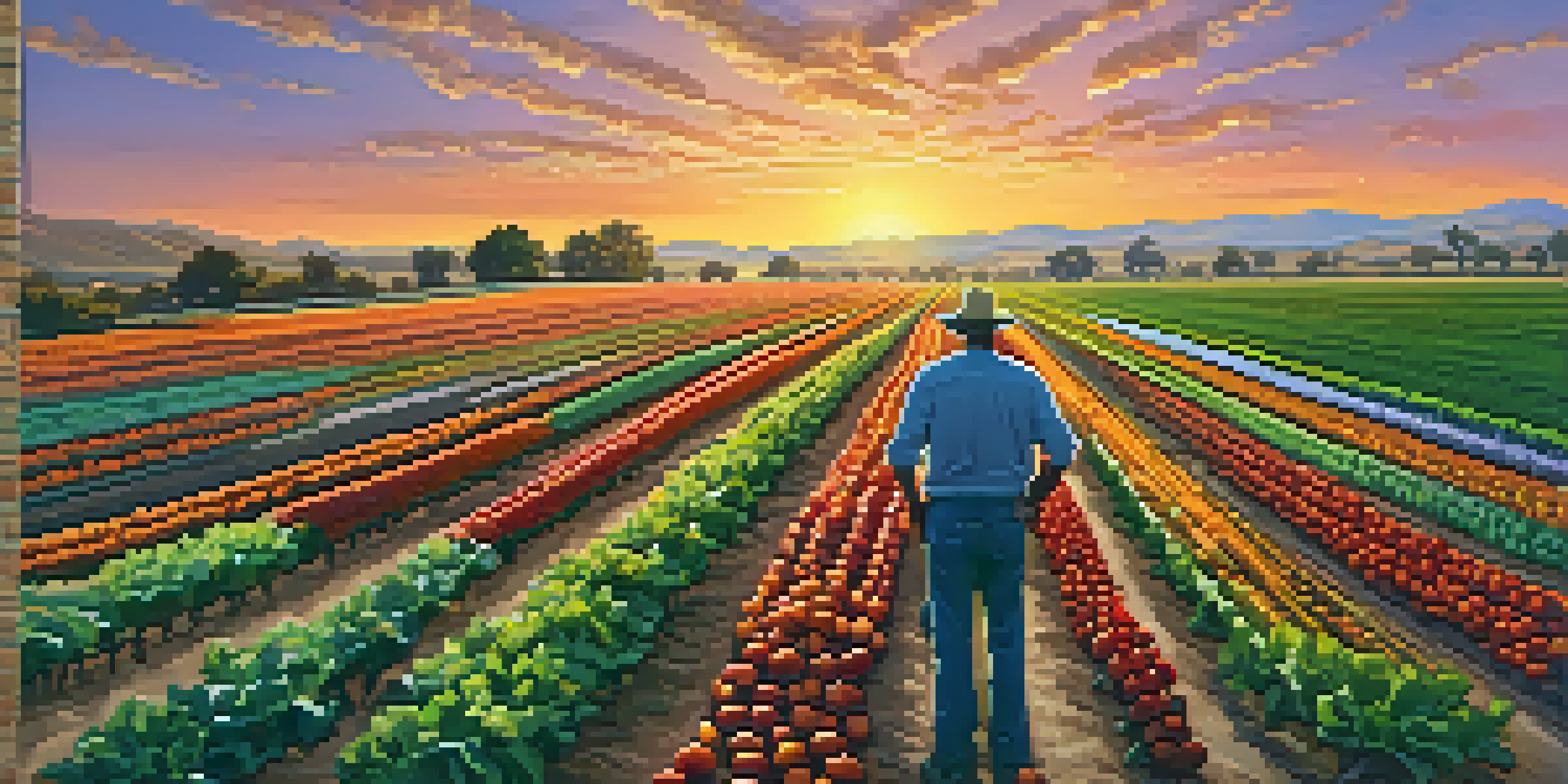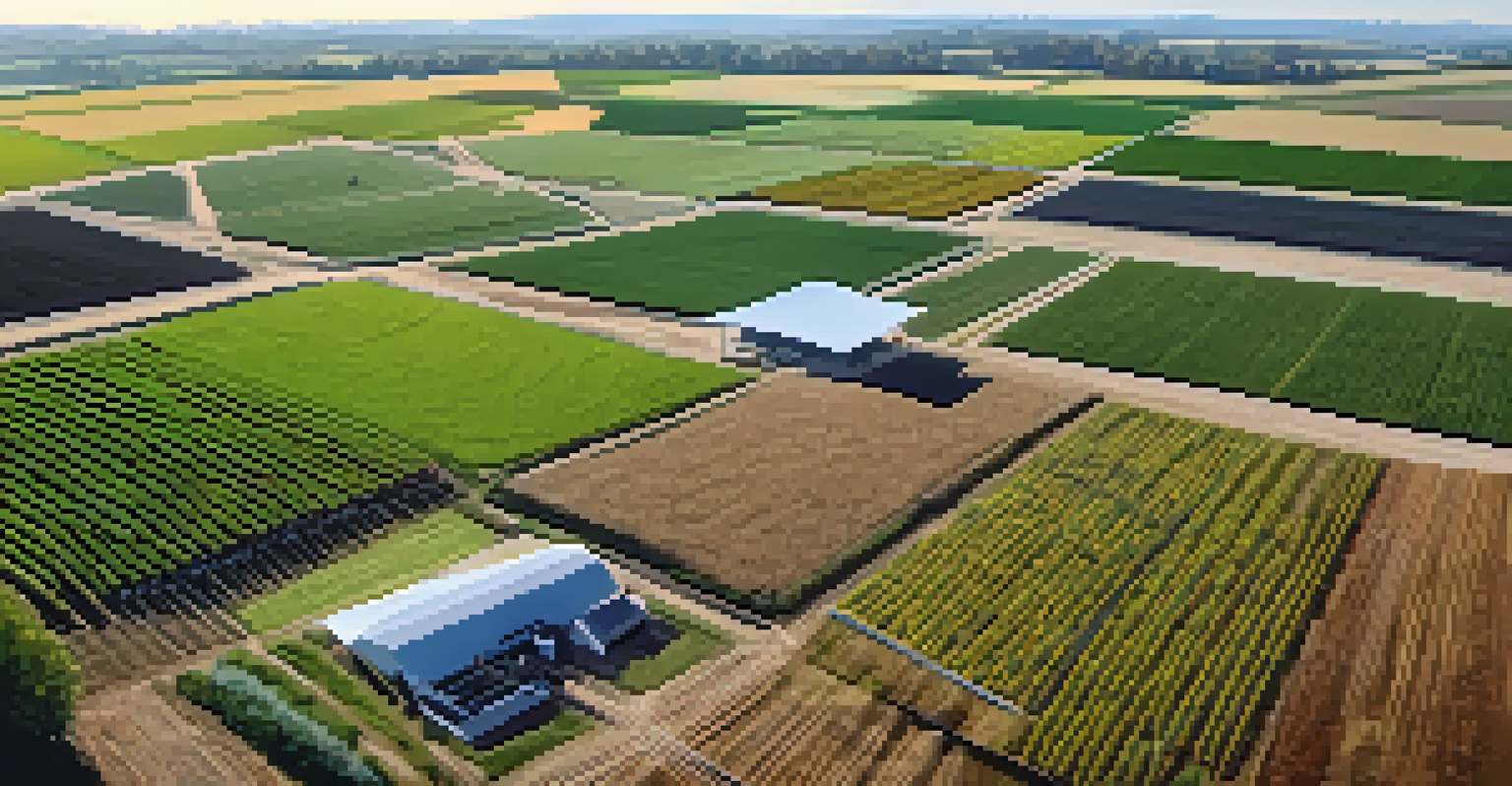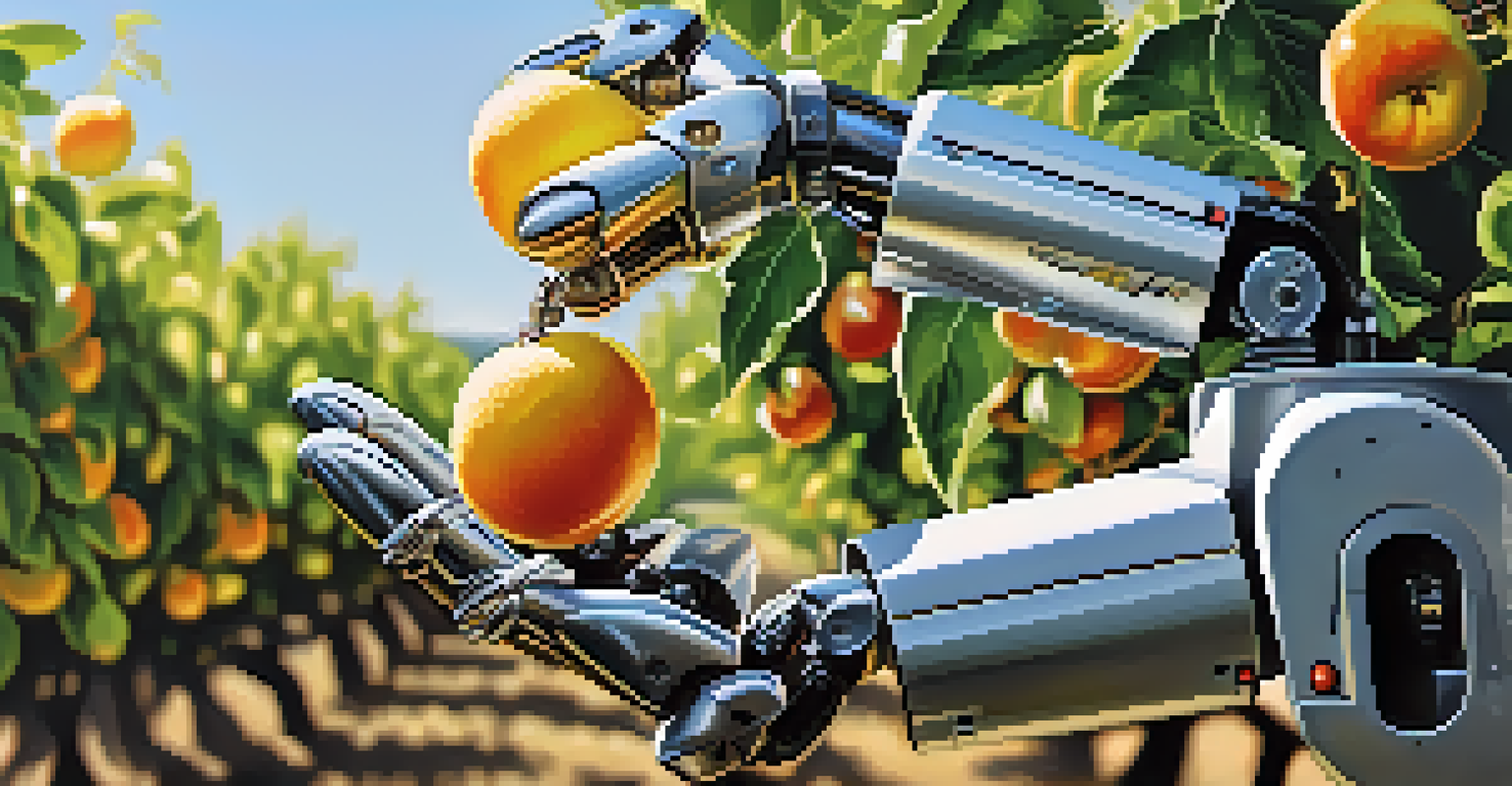The Role of Technology in California's Agricultural Innovations

Introduction to California's Agricultural Landscape
California is often referred to as the agricultural heart of the United States, producing over 400 different crops. Its diverse climate and geography allow for a wide variety of fruits, vegetables, and nuts to thrive. However, with increasing challenges such as climate change and water scarcity, innovation has become vital for sustaining this crucial sector.
The future of food is not just about what we eat, but how we produce it sustainably.
As farmers face these obstacles, technology emerges as a key player in enhancing productivity and sustainability. From smart irrigation systems to precision farming, these innovations are not just trends but necessities for modern agriculture. Understanding this evolution can help us appreciate the future of farming in California.
In this article, we'll explore the various technologies transforming California's agricultural landscape, highlighting their roles and impacts. By examining these innovations, we can better grasp the intersection of technology and farming, which is reshaping the industry for generations to come.
The Rise of Precision Agriculture Technologies
Precision agriculture is revolutionizing how farmers approach crop management. This method uses data analytics, GPS, and IoT devices to help farmers monitor and manage their fields with pinpoint accuracy. By applying the right amount of water, fertilizers, and pesticides at the right time, farmers can significantly enhance crop yields while minimizing waste.

For instance, drones equipped with advanced sensors can survey large areas quickly, identifying issues like pest infestations or nutrient deficiencies. This not only saves time but also allows for more targeted interventions. Farmers can make informed decisions based on real-time data, leading to healthier crops and more efficient use of resources.
Tech Revolutionizes California Farming
Innovative technologies like precision agriculture and smart irrigation are transforming how California farmers enhance productivity while addressing environmental challenges.
Moreover, precision agriculture helps reduce the environmental impact of farming. By optimizing inputs and minimizing excess, farmers can decrease runoff and conserve natural resources. This balance between productivity and sustainability is crucial for the future of agriculture in California.
Smart Irrigation Solutions for Water Conservation
Water conservation is a pressing concern for California's agriculture, as the state frequently experiences drought conditions. Smart irrigation technologies are emerging as essential tools for farmers to maintain crop health while using water more efficiently. These systems utilize sensors and weather data to determine the optimal watering schedule for crops.
Innovation in agriculture is about harnessing technology to create a more sustainable and efficient food system.
For example, soil moisture sensors can relay real-time information about the moisture levels in the ground. This data enables farmers to adjust their irrigation practices, ensuring that crops receive just the right amount of water. As a result, they can avoid overwatering, which not only wastes water but also can harm plant health.
The implementation of these smart irrigation systems has shown promising results. Many farmers have reported reductions in water usage by as much as 30%, leading to significant cost savings and a smaller environmental footprint. This technology exemplifies how innovation can directly address the challenges posed by climate change.
Robotics and Automation in Harvesting
As labor shortages continue to challenge California's agriculture, robotics and automation are stepping in to fill the gap. Harvesting robots, for example, are designed to pick fruits and vegetables with precision and speed, helping farmers meet demand without relying solely on human labor. These machines can work longer hours and are not affected by seasonal labor availability.
One notable development is the use of robotic arms equipped with advanced sensors that can detect the ripeness of fruits. By using machine learning algorithms, these robots can learn to distinguish between ripe and unripe produce, ensuring that only the best items are picked. This not only improves efficiency but also reduces waste.
Robotics Address Labor Shortages
Robotics and automation are stepping in to fill labor gaps in California agriculture, improving efficiency and ensuring quality in harvesting.
While the initial investment in these technologies can be substantial, the long-term benefits often outweigh the costs. Increased efficiency, reduced labor dependence, and higher quality produce make robotics a valuable asset for the future of farming in California.
Data Analytics and Big Data in Agriculture
Data analytics is transforming how farmers make decisions, allowing for more informed and strategic planning. By collecting and analyzing vast amounts of data, farmers can gain insights into everything from soil health to market trends. This information helps them make proactive choices that enhance productivity and profitability.
For instance, big data can identify patterns in crop performance, helping farmers understand which varieties thrive in specific conditions. This knowledge enables them to optimize their planting strategies, ensuring that they choose the right crops for their land and climate. Additionally, data analytics can forecast weather patterns, allowing farmers to prepare for adverse conditions.
As more farmers adopt data-driven approaches, the agricultural landscape in California becomes increasingly sophisticated. These technological advancements empower farmers to adapt to changing environments and demands, ultimately leading to a more resilient agricultural sector.
Biotechnology's Role in Crop Improvement
Biotechnology is playing a crucial role in enhancing crop resilience and productivity. Through genetic engineering, scientists can develop crops that are more resistant to pests, diseases, and extreme weather conditions. This innovation is particularly important in California, where environmental challenges are prevalent.
For example, genetically modified organisms (GMOs) can be engineered to require less water or tolerate higher salinity levels, making them better suited for California's diverse ecosystems. By increasing crop resilience, biotechnology not only boosts yields but also helps ensure food security in an ever-changing climate.
Data Drives Informed Farming Decisions
Data analytics and big data empower farmers to make proactive decisions, optimizing crop management and adapting to changing market conditions.
Additionally, biotechnology can lead to the development of crops with improved nutritional profiles, addressing public health concerns. As consumers become more health-conscious, the demand for nutrient-rich foods continues to rise. By leveraging biotechnology, California's farmers can meet these needs while contributing to a sustainable food system.
Sustainable Practices Enhanced by Technology
Sustainability is at the forefront of agricultural innovation, and technology plays a significant role in promoting eco-friendly practices. Many farmers are now adopting sustainable methods that not only protect the environment but also enhance the quality of their products. Technologies such as cover cropping and organic farming techniques are increasingly supported by digital tools.
For instance, software platforms can help farmers plan crop rotations and manage their land more efficiently, reducing the need for chemical inputs. By using these resources, farmers can maintain soil health, improve biodiversity, and increase carbon sequestration on their farms. This holistic approach to farming benefits both the land and the community.

Moreover, consumers are increasingly seeking out sustainable products, and technology helps farmers meet this demand. By showcasing their sustainable practices through digital marketing and labeling, farmers can attract a growing market segment that values environmentally responsible agriculture. This trend highlights the synergy between technology and sustainability in California's agricultural sector.
The Future of Technology in California Agriculture
Looking ahead, the role of technology in California's agriculture is poised to expand even further. As new innovations emerge, farmers will continue to adapt to meet the challenges of a changing climate and evolving consumer preferences. The integration of artificial intelligence, machine learning, and blockchain technology is already beginning to make waves in the industry.
For example, AI can predict crop yields and market demands, helping farmers make informed decisions about planting and harvesting. Blockchain technology can enhance transparency in the supply chain, allowing consumers to trace their food from farm to table. These advancements not only improve efficiency but also foster trust between producers and consumers.
Ultimately, the future of California agriculture will depend on the ability of farmers to embrace these technologies and innovate continuously. By leveraging technology, the agricultural sector can not only thrive but also contribute to a more sustainable and resilient food system for the state and beyond.